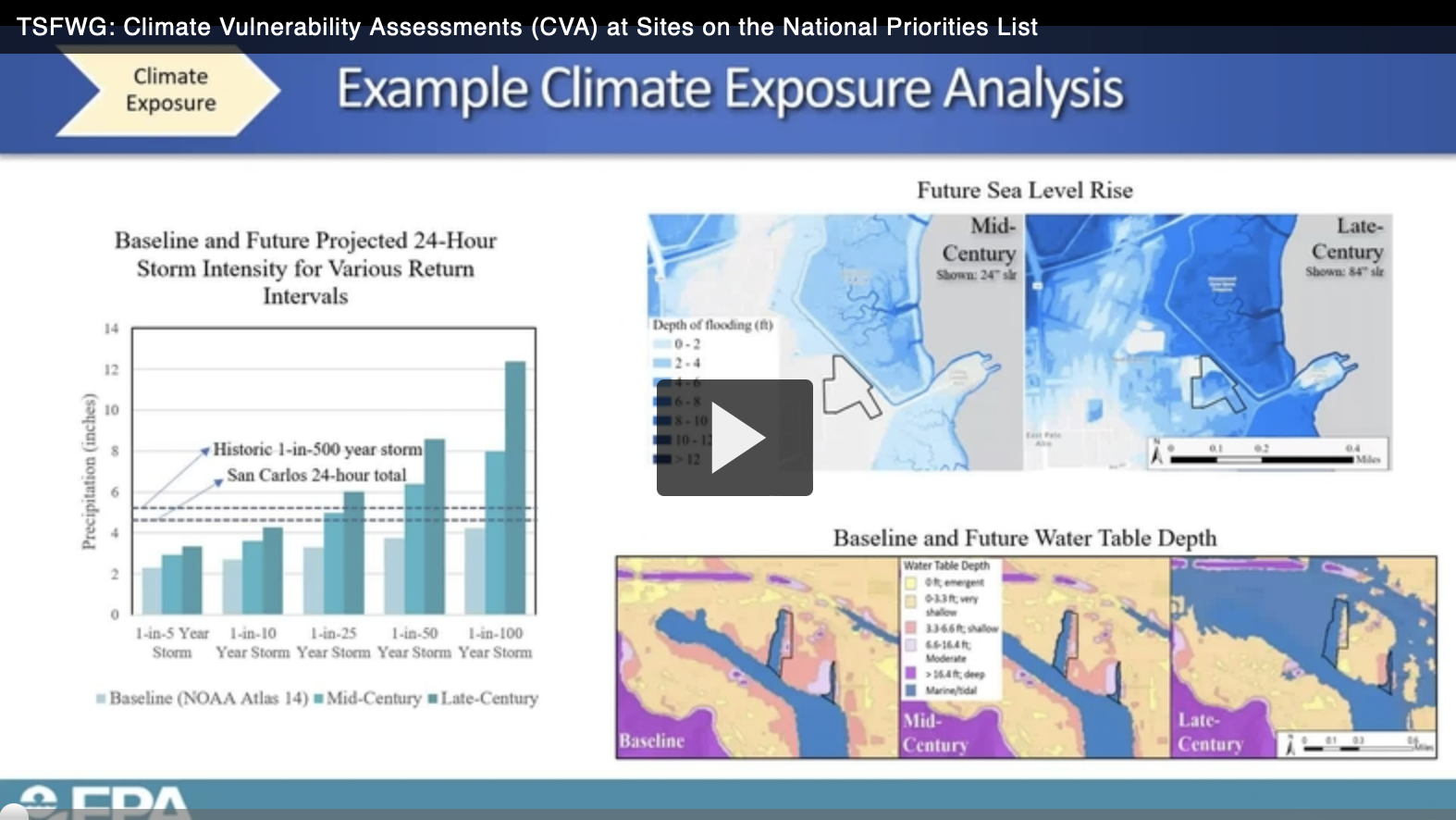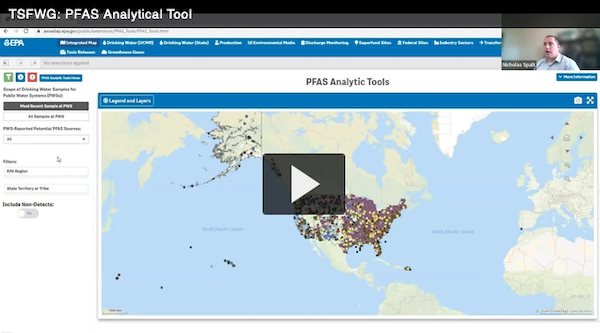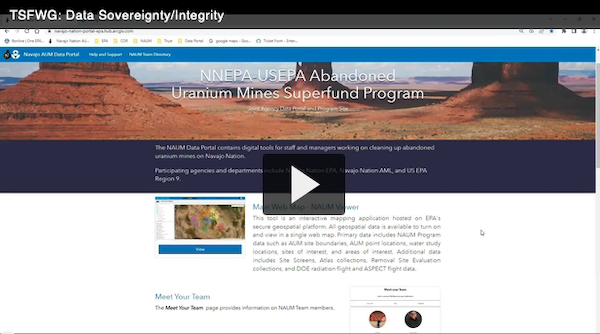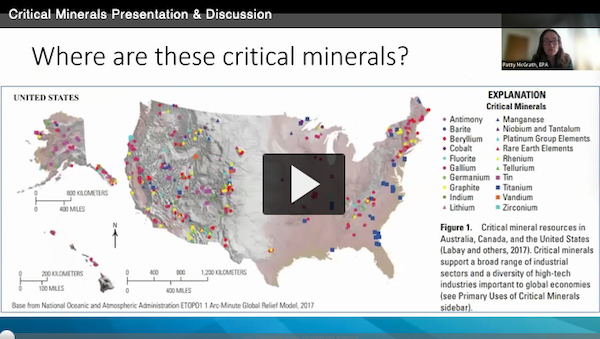The Tribal Superfund Working Group (TSFWG) is a network of Tribal professionals, other experts, and government employees that are engaged in work with Superfund sites, Federal Facilities and other sites of special concern. These individuals work on protecting Tribal lands, water, and community health and have become part of this group either by self-subscribing, because of their past work on Superfund issues, or because Superfund is their primary area of work or interest. Sign up for the TSFWG listserv here, or email Todd Barnell (Todd.Barnell@nau.edu) or Julie Meikowski (Julie.Meikowski@nau.edu) and request to be added.
TSFWG Meeting Notes, Presentations, and Recordings
January 2024: Climate Vulnerability Assessments at Sites on the National Priorities List
- The underlying authorities to consider climate change at NPL sites
- Key questions addressed through the climate vulnerability assessment process
- Tools and data sources used to develop climate projections
- Recurring climate vulnerabilities that could affect remedy protectiveness
- The associated adaptation measures needed to increase remedy resilience to climate impacts
- He also provided a few examples of sites with Native American interest where such an assessment has been done and/or climate adaptation measures have been implemented.
- You can find presentation files under the Attachments tab when you go to the video.
October 2023: PFAS Analytical Tool
In this quarterly meeting of the Tribal Superfund Working Group, we were joined by staff from four groups currently working on several fronts to address PFAS on or near Tribal lands. We heard from Page Hingst with the Santee Sioux Nation, Kaylene Ritter with Abt Associates, Amanda Van Epps with the EPA Superfund Office, and Nick Spalt with the EPA Office of Enforcement and Compliance Assurance.
- Starting at 4:45, Kaylene gave a brief introduction to PFAS and then discussed PFAS within the context of tribal lands.
- Starting at 14:30, Page gave an update on the work the Tribal PFAS Working Group is doing.
- Starting at 25:00, Amanda described how the EPA Superfund Office defines sites with Native American Interest and how many of those sites have PFAS detections.
- Starting at 29:30, Nick provided a brief introduction and demonstration of EPA’s PFAS Analytical Tool an interactive map that combines multiple data sets.
- You can find presentation files under the Attachments tab when you go to the video.
June 2023: The Navajo Nation AUM Portal and Tribal Data
In this quarterly meeting of the Tribal Superfund Working Group we were joined by staff from the Navajo Nation and the EPA. They discussed a collaborative project they’ve worked on called the Navajo Nation Abandoned Uranium Mine Data Portal. They addressed the issue of data sovereignty and integrity, and highlighted their work on creating this web-based portal over the last several years. The portal includes an internal web viewer for visualization of data collected, access to SharePoint libraries containing relevant data and metadata, up-to-date staff contacts from both government agencies, and a help and support page complete with training videos. The Navajo AUM Data Portal ensures that data collected in the course of Superfund work on Navajo Nation are secure and accessible to both EPA and Navajo Nation. Today, the Navajo AUM Data Portal is used to review sites, work plans, historical site information, and generate mobile applications for use in field reconnaissance.
March 2023: Critical Minerals Presentation and Discussion
This presentation was recorded in March 2023 as part of the Tribal Superfund Working Group meetings. Critical minerals provide the building blocks for many modern technologies, including batteries for green technologies and electric vehicles. The Biden-Harris Administration is prioritizing domestic production of key critical minerals while balancing concerns from communities about renewed mining efforts and impacts. EPA and USGS representatives share the latest on the federal government’s work to increase sustainable mining of critical minerals as well as efforts to reprocess mining waste to collect critical minerals at existing mines.
Click here to access TSFWG Meeting Notes, Presentations, and Recordings from prior years
December 2022: EPA’s Federal Facilities Restoration and Reuse Office (FFRRO) and Hanford BC Case Study
July 2022: The Bradford Island and Henryetta Iron & Metal NPL Sites
May 2022: All Hazards Planning Guidelines
March 2022: Tribal Community Involvement at Superfund Sites
January 2022: PFAS Strategic Roadmap
September 2021: Climate Resiliency & Superfund Sites with Carlos Pachon
June 2021: Environmental Justice Conversation with Carlton Waterhouse
May 2021: TSFWG Virtual Panel: Finding and Managing Consultants
April 2021: Tribal Superfund Working Group Annual Meeting: Saint Regis Mohawk Tribe, (ten recordings and PDF presentations available with each recording)
February 2021 Evaluating Tribal Dietary, Lifestyle, and Ceremonial Exposures for use in EPA Superfund Risk Assessments PDF Presentation
December 2020: EPA Office of Mountains, Deserts, and Plains Director Discussion with TSFWG (closed session – no recording)
April 2020: Native Food Pathways and Contaminated Sites – A Discussion Between EPA and Tribal Professionals
March 2020: Protecting the Sacred in an Environmental Cleanup – the Fort Mojave Indian Tribe and the Topock Remediation Project, Topock Remediation Project Overview
November 2019: Stresses and Successes: A Difficult Responsibility for Tribes Restoring Contaminated Lands and Water
February 2019: Radionuclide Contaminant Transport at the Pueblo de San Ildefanso
November 2018: Phytoremediation Using Bacterial Endophyte Enhanced Poplar Trees
March 2018: Assessing and Preventing Exposures to EDCs in Alaska Native Communities on St. Lawrence Island
November 2017: Increasing Community Engagement on Contaminated Lands
February 2017: Superfund Cooperative Agreements – A Tribal Perspective
December 2016: Superfund Cooperative Agreements – A Federal Perspective
February 2016: Review of Coeur d’Alene Tribe’s Work on Bunker Hill Superfund Site (audio recording)
November 2015: TSFWG Meeting Notes, Presentation by Dr. Barbara Harper – From Time Immemorial
August 2015: TSFWG Meeting Notes
February 2015: TSFWG Meeting Notes
November 2014: TSFWG Meeting Notes
July 2014: TSFWG Meeting Notes
March 2014: TSFWG Meeting Notes
Several Tribal Superfund professionals that are heavily involved in TSFWG activities also serve on the TSFWG Advisory Council (AC), acting as a resource and serving as a bridge between the TSFWG and the Tribal Waste and Response Steering Committee, and ITEP.
Current members of the TSFWG AC include:
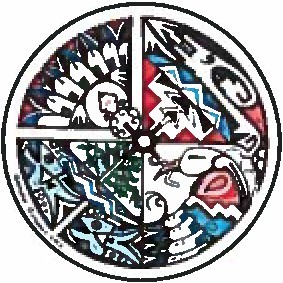
Dino Chavarria
Director of Environmental Affairs, Santa Clara Pueblo
Dino Chavarria is the director for the Santa Clara Pueblo Office of Environmental Affairs. He oversees diverse programs dedicated to the protection of Pueblo resources such a Water Quality, Solid Waste, Superfund and Non-Point Source Pollution. The Pueblo is impacted by the North Railroad Avenue Plume Superfund site, which is comprised of multiple shallow and deep groundwater plumes of chlorinated solvents from a dry cleaner. The site was turned over to the State of New Mexico in 2019 after 10 years of remediation efforts by EPA Region 6. The site is within the exterior boundaries of the Pueblo. Monitoring wells and a treatment system were placed on Pueblo lands to assist in the clean-up of the site.

Kristen Hanson
Environmental Specialist, Lac du Flambeau Band of Lake Superior Indians
Kristen Hanson serves as the Environmental Response Program Coordinator and Environmental Specialist for the Lac du Flambeau Band of Lake Superior Chippewa Indians located in northern Wisconsin. Her work focuses on assessment and cleanup of contaminated sites. Kristen holds a Bachelor of Science degree in Geology from the University of Wisconsin, Eau Claire.

Alex James
Environmental Program Manager, Yakutat Tlingit Tribe
Alex James is the environmental program manager for the Yakutat Tlingit Tribe. He lives in Yakutat, Alaska and works, fishes, and hunts throughout the usual and accustomed areas of the Tribe all around Yakutat. Alex manages planning and on -the-ground removal actions and cleanup work performed by trained and qualified Tribal members. This work is supported by the U.S. Department of Defense (DoD) Native American Lands Environmental Mitigation Program (NALEMP) and EPA Tribal Response Program. Alex brings several years of experience in construction management and conducting work in the forests of Southeast Alaska. Alex has accomplished a series of successful removal actions and site investigations that have contributed to the cleanup of Tribal lands and protection of Tribal resources since 2008.

Summer King
Environmental Scientist, Quapaw Tribe
Summer King is the Environmental Scientist for the Quapaw Nation’s Environmental Department. She has a Master’s Degree in Industrial Management, and a Bachelor’s Degree in Environmental Management. She primarily works on the Tar Creek Superfund Site in northeast Oklahoma, in partnership with the EPA, State of Oklahoma, and the Quapaw Nation. Summer is charged with conducting sampling activities on active superfund remediation sites, and is involved in the remediation process from planning to final reporting. Summer is also a liaison to Colleges and Universities wanting to do research at Tar Creek. As such, she can be found doing everything from migratory bird point counts to acid mine discharge analysis. Summer is a proud citizen of the Cherokee Nation, and serves on the Tribal Superfund Working Group Advisory Council.

Traven Michaels
Environmental Response Specialist, Little Traverse Bay Band of Odawa Indians
Aanii. Traven ndizhnikaaz. Waabizhiish ndodem. Baawating Ojibwe ndodabendaagwaz. My name is Traven Michaels, I am of the Marten clan, I am Ojibwe and I am from Petoskey. I graduated from Central Michigan University in May 2015 with a Bachelor of Science. My specific degree was a double major in Environmental Science and Land Use Planning. I am currently the Environmental Response Specialist with LTBB, which puts me in charge of the brownfields and environmental emergency response program. I have lived in this area for most of my life and have a deep connection to the land, water, wildlife and people of Northwestern Michigan. I am actively passionate about protecting our environment and unique natural resources both on and off the job. During my free time I enjoy disc golfing, backpacking, playing and writing music, camping, geocaching, kayaking, spending time with friends and family and anything outdoors. I am beyond grateful to be able to apply my education and my skills to ensure that our beautiful home is here for the next seven generations to enjoy.

Rebecca Stevens
Program Manager, Coeur d’Alene Tribe
Rebecca is the Program Manager for the Coeur d’Alene Tribe’s Lake Management Department-Hazardous Waste Management Program. She also serves the role as the Restoration Coordinator with the Restoration Partnership. Rebecca has been working on water quality related issues for over 15 years and in 2009, she was co-author of the Coeur d’Alene Lake Management Plan. Rebecca represents the Tribe in the Bunker Hill Mining and Metallurgical Complex Superfund Site working with EPA while implementing their remedy for the Basin. She is also the Tribe’s technical representative on the Restoration Partnership for which all Natural Resource Damage Assessment (NRDA) claims have been settled and on the ground restoration work will commence in 2019. Rebecca continues to work with other Tribes on NRDA issues while coordinating with the United States Department of the Interior.
Rebecca is a proud member of the Tribal Waste and Response Steering Committee where she also serves on the Tribal Superfund Work Group Advisory Council. She is very honored to work for the Coeur d’Alene Tribe and is proud to be a part of restoring natural resources in the Coeur d’Alene Basin.
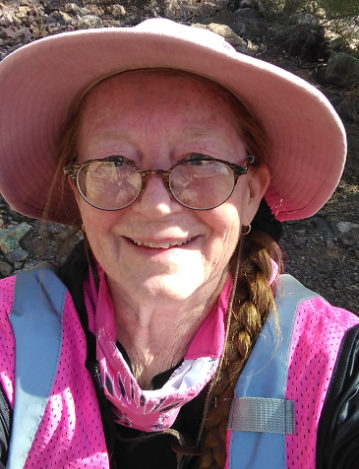
Laurie Suter
Mineral Resources Administrator, Tohono O'odham Nation
Laurie Suter works for the Tohono O’odham Nation Department of Natural Resources Mining Office as the Mineral Resources Administrator since Nov 26, 2014. She has extensive experience comprised in environmental assessments, laboratory analysis, soils, mineral and oil/gas exploration, and reclamation. The Tohono O’odham Nation’s mine site issues include two active copper mines, as well as about 90 claims and hundreds of abandoned mine-scarred sites. Her education includes biology, geology, teaching, and art.
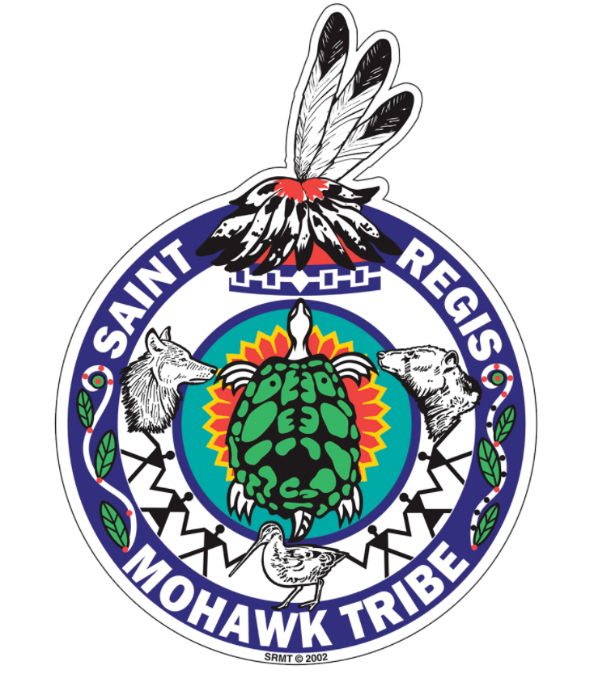
Jay Wilkins
Environmental Specialist, Saint Regis Mohawk Tribe

